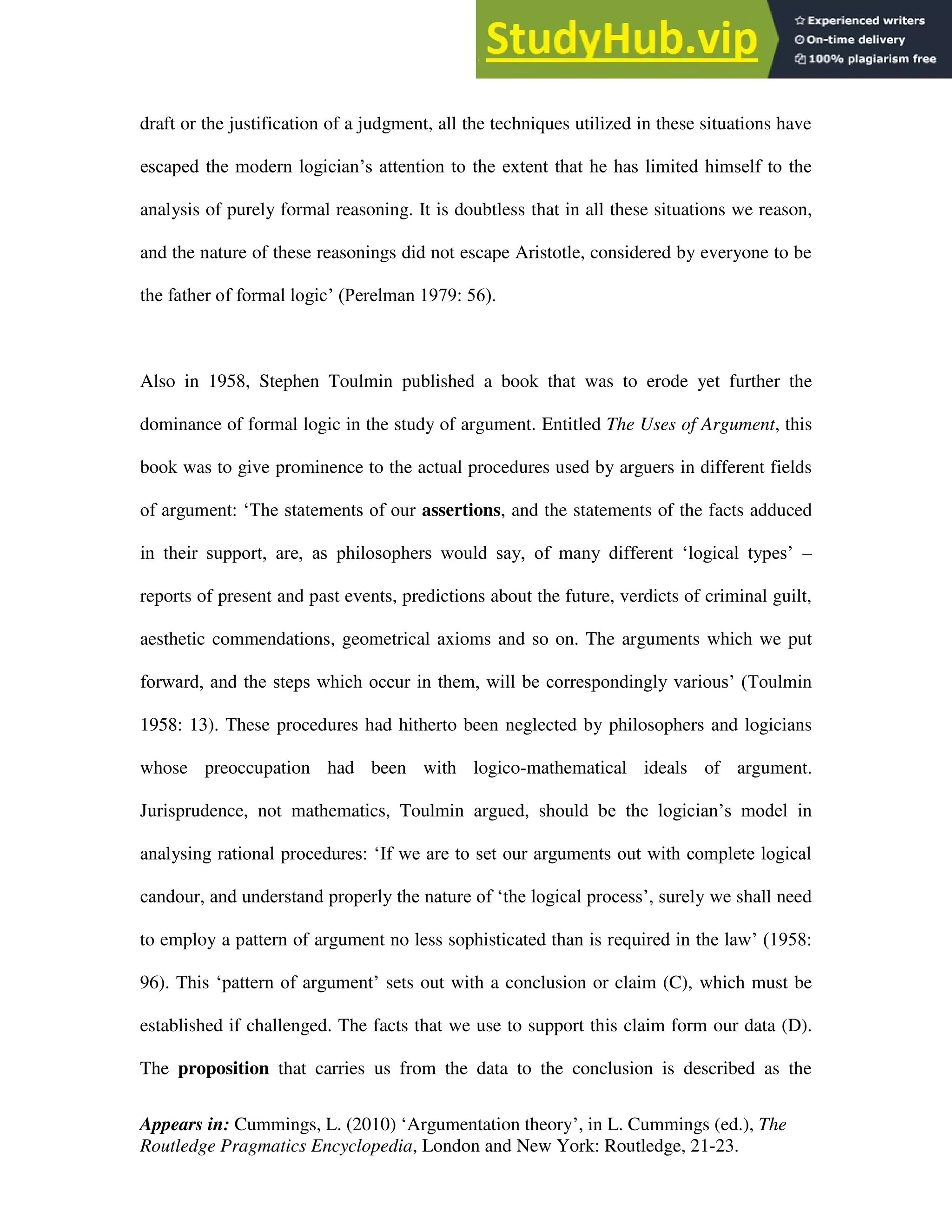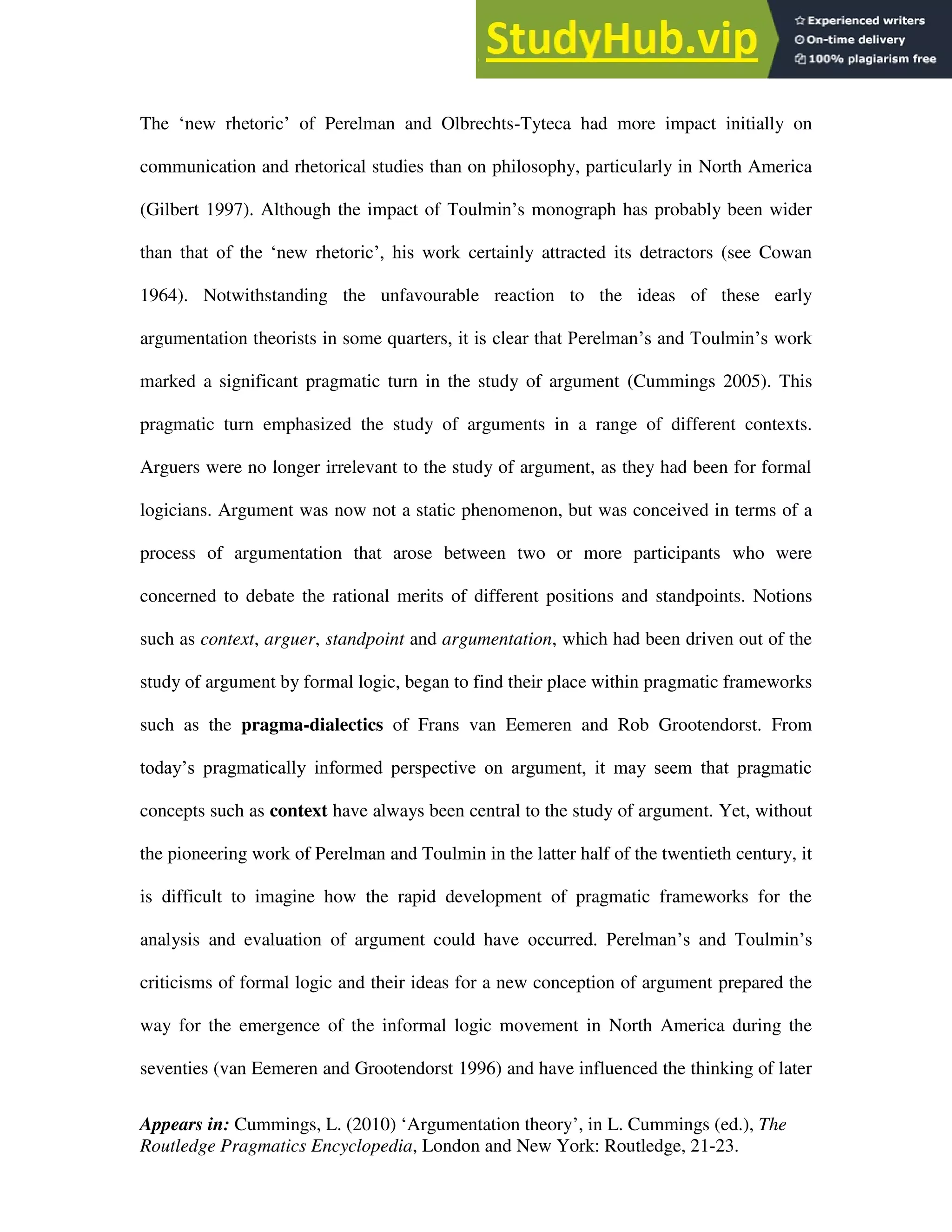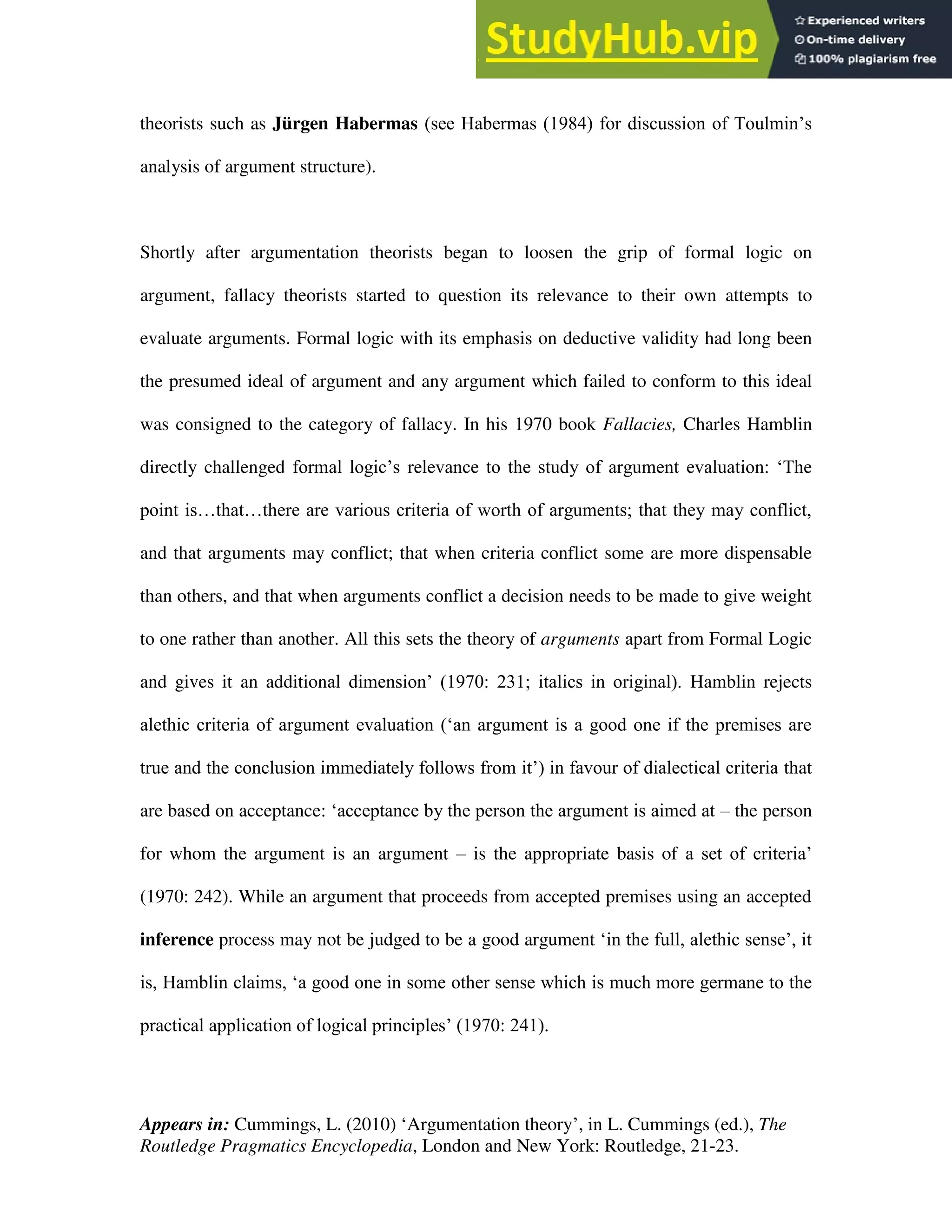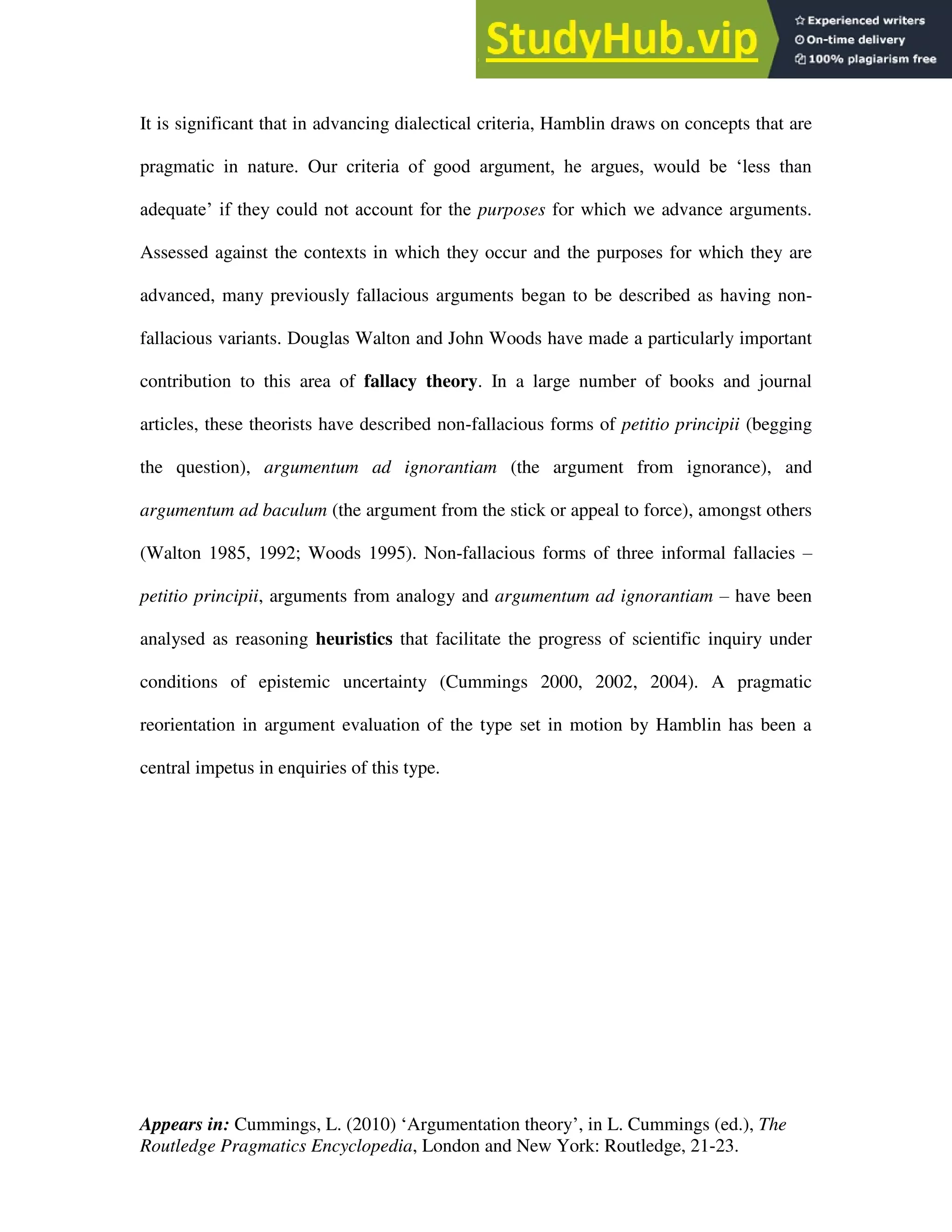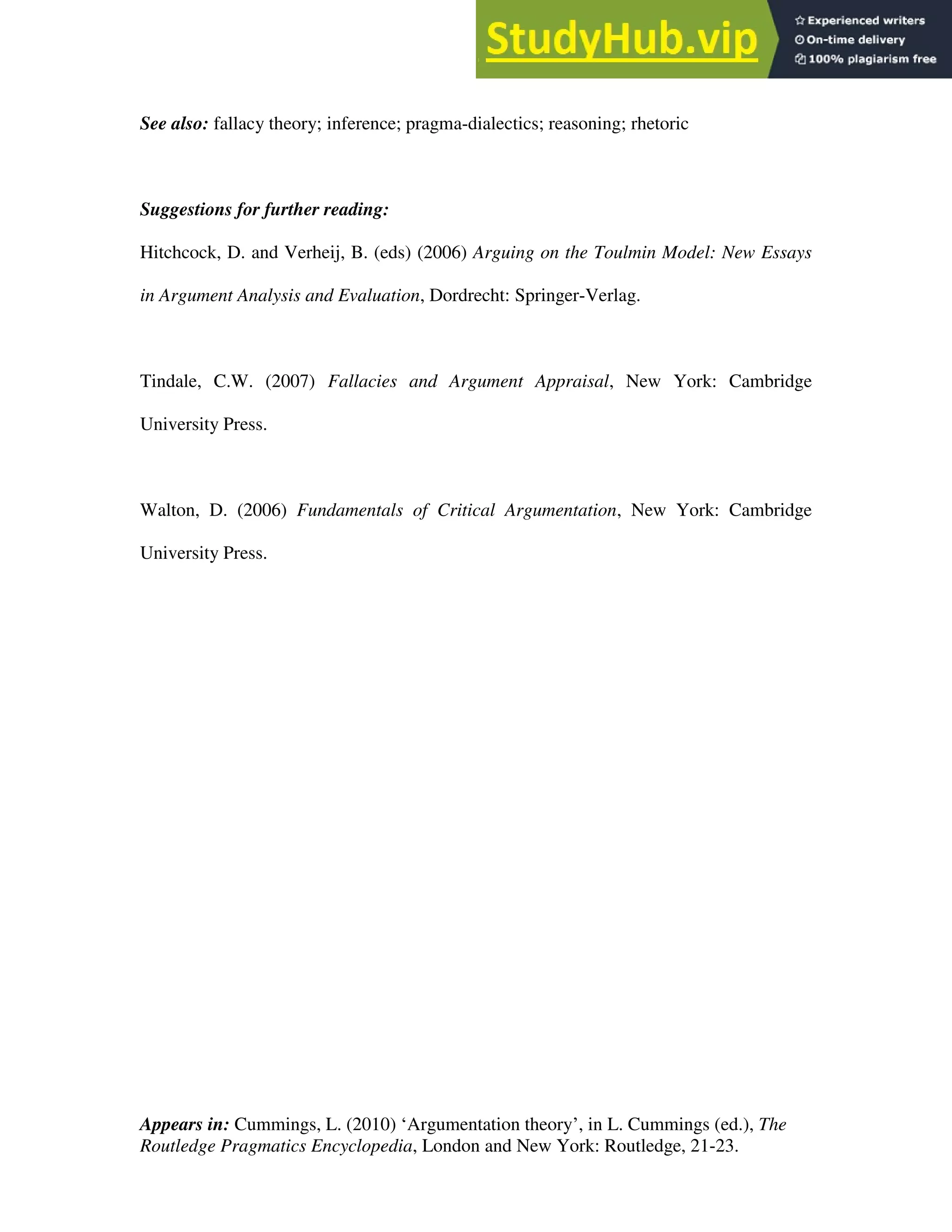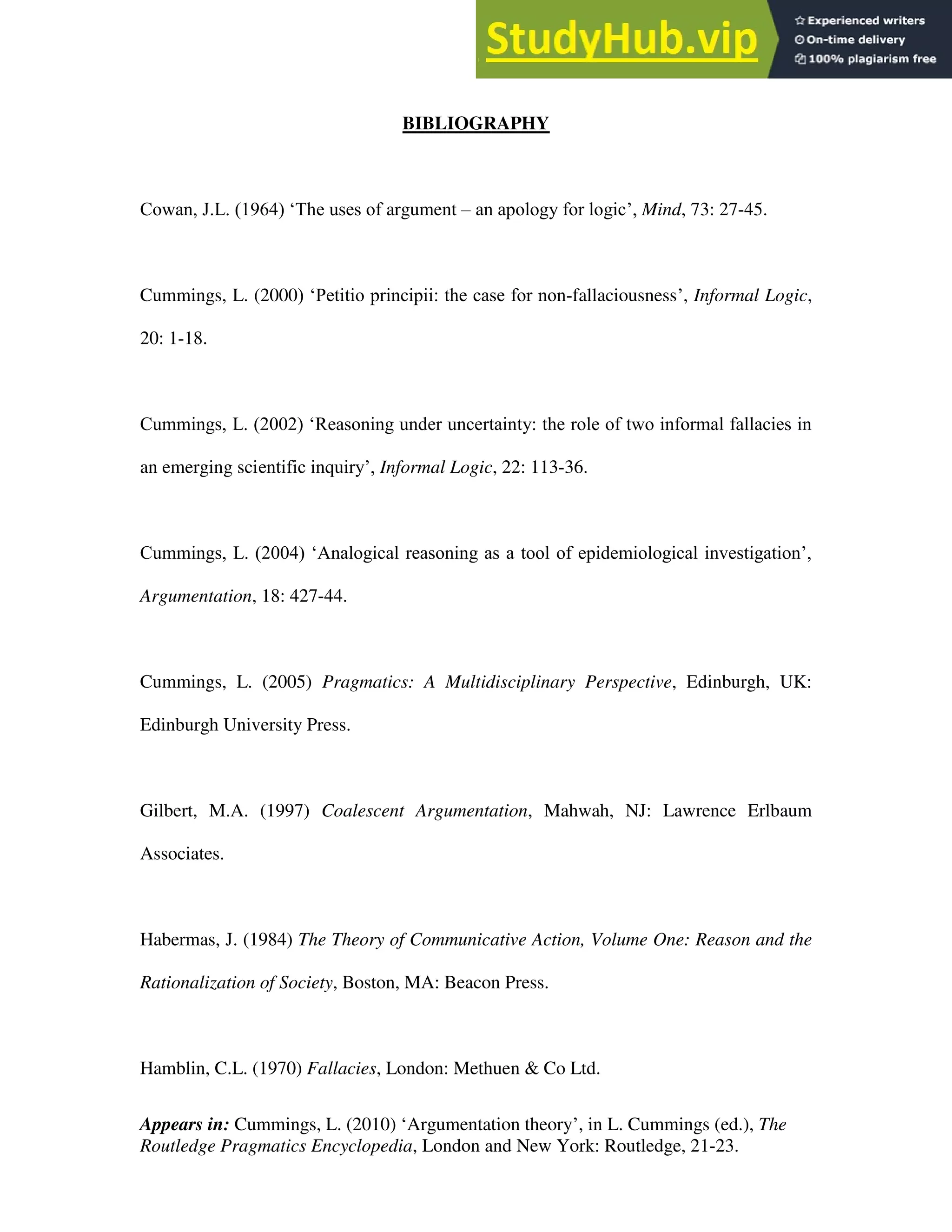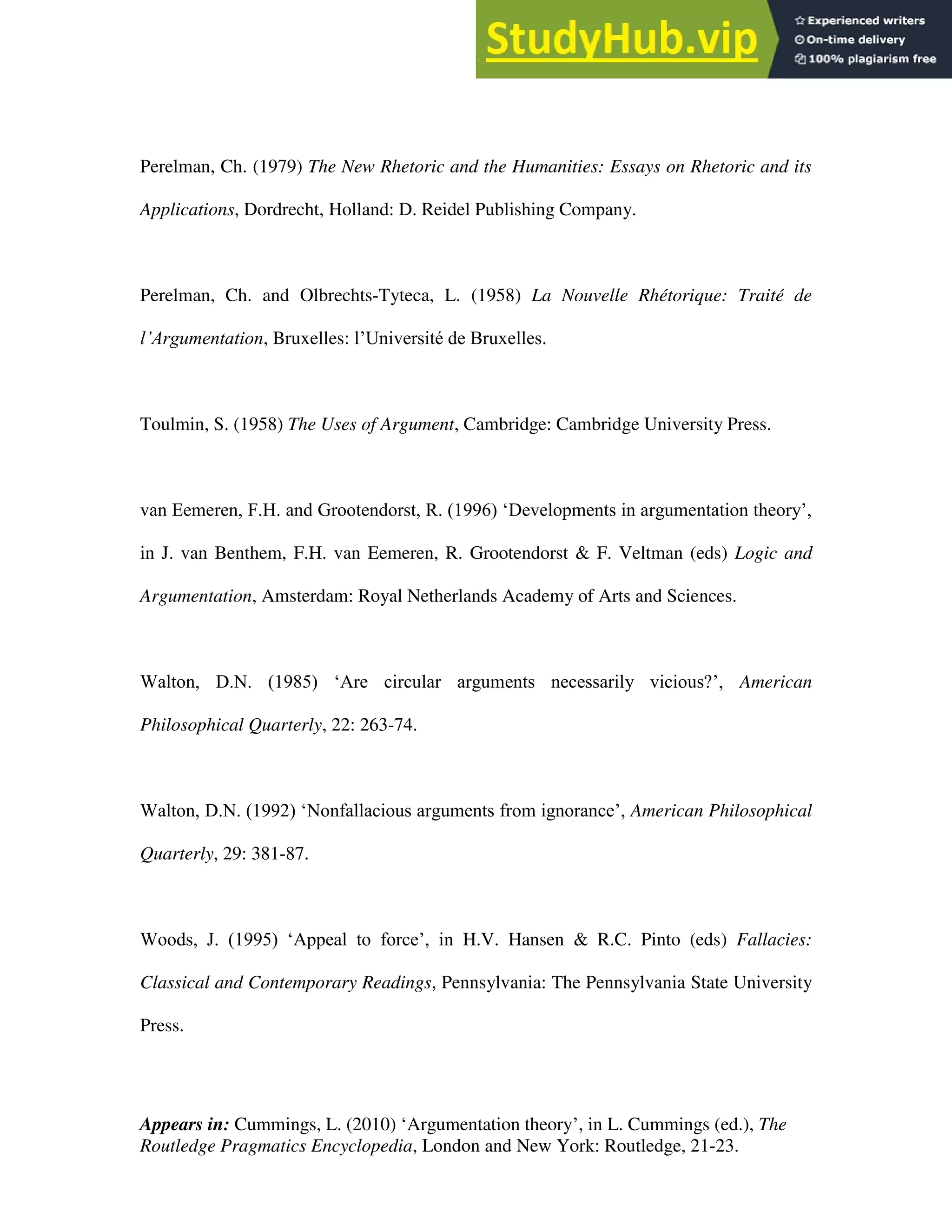This document provides an overview of the development of argumentation theory. It discusses how Chaïm Perelman and Lucie Olbrechts-Tyteca challenged the dominance of formal logic with their 1958 work, introducing concepts like audience adherence. Stephen Toulmin also published an influential book in 1958 emphasizing actual argument practices. These works shifted the field's focus to contexts and arguers. Later theorists like Hamblin and Walton further challenged formal logic's role in evaluation, advocating pragmatic criteria and exploring non-fallacious forms of arguments.

